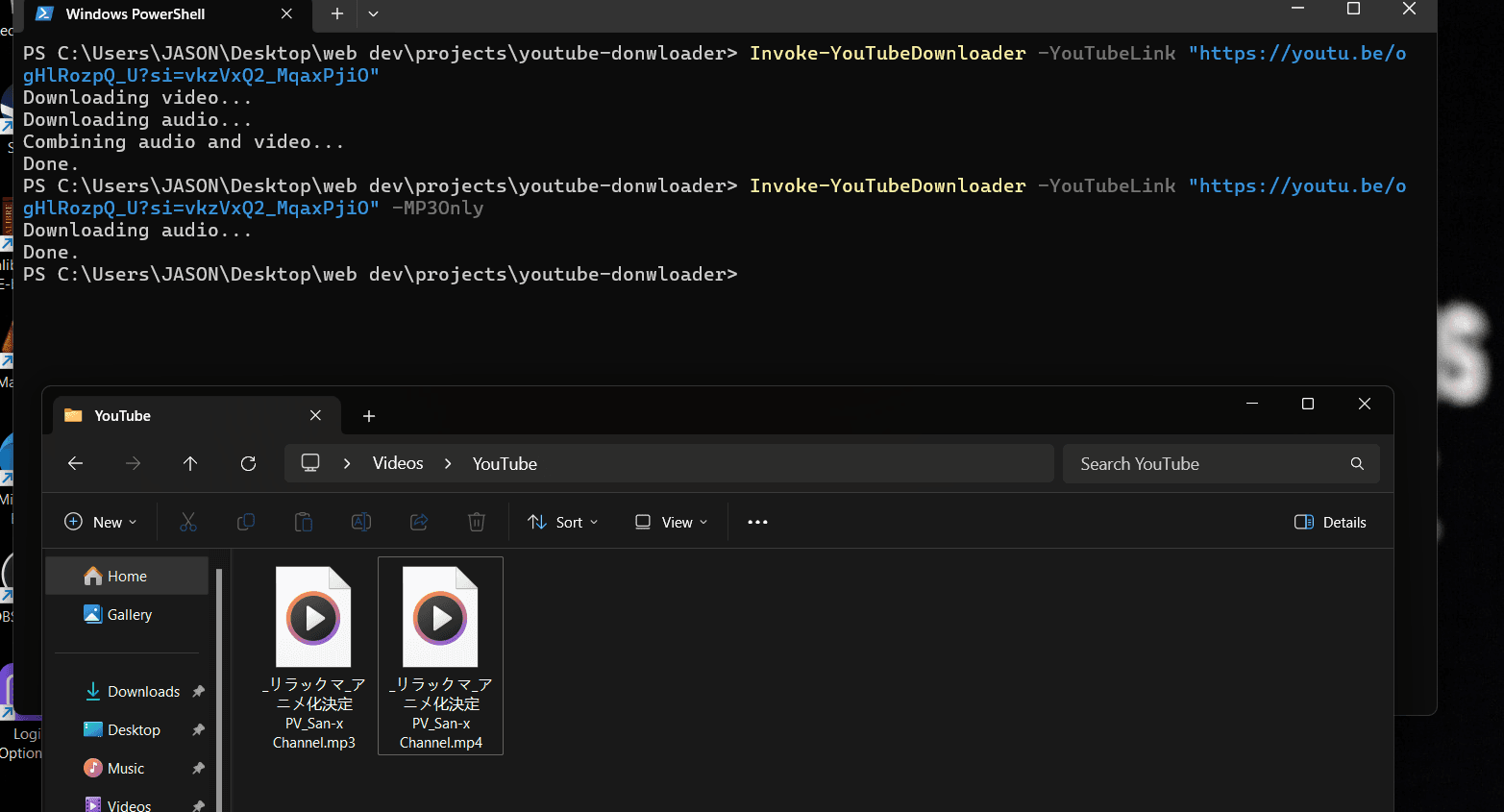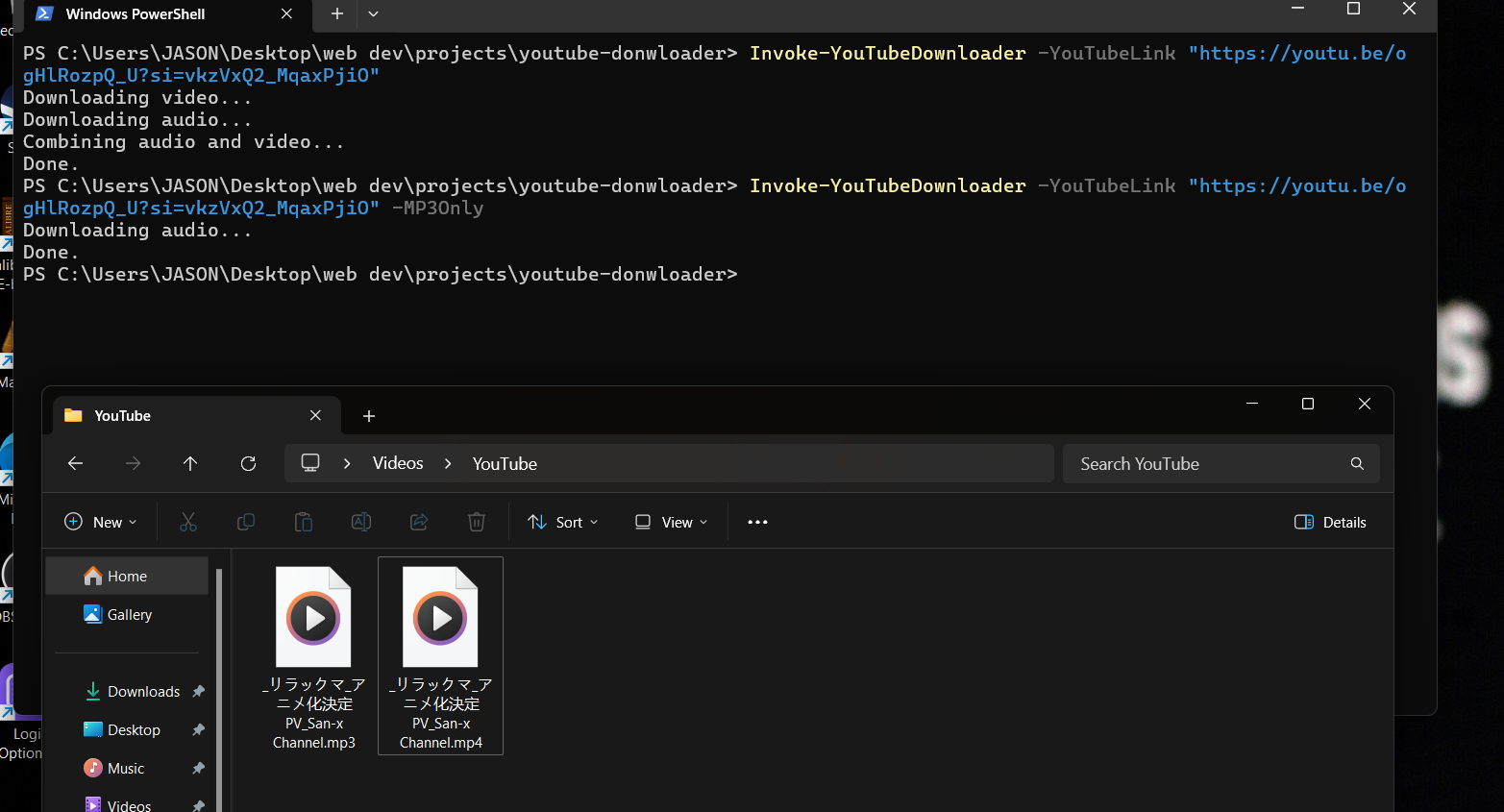
Description:
I’ve recently been diving into the basics of Python and PowerShell, and to put my skills into practice, I created a pet project to download video and audio from YouTube. It’s been a great way to apply what I’ve learned while working with real-world tools like PyTubeFix and ffmpeg for handling video processing. This project has given me hands-on experience with Python scripting and PowerShell automation, and it’s been really rewarding to see everything come together!
Insights gained from the YouTube Downloader:

Combining audio and video with Ffmpeg-Python
While using PyTubeFix to download a video at its highest available resolution, I encountered an issue: the downloaded video had no audio. Thankfully, a comment by Mosab2077 on this Reddit post pointed out that in such cases, video and audio often need to be downloaded separately. Instead of playing them individually, I wanted to combine them automatically.
After some research, I discovered ffmpeg, a popular tool for video processing, and its Python wrapper, ffmpeg-python, which allows Python scripts to interact directly with ffmpeg. Initially, I assumed installing the ffmpeg-python package would be enough, but I kept encountering a FileNotFoundError at runtime. It turned out that ffmpeg-python is just a wrapper—it requires the actual ffmpeg program to be installed separately on your computer. Once I installed ffmpeg, everything worked perfectly, and the video processing was incredibly fast!
Integrating Powershell and Python
In Python, a virtual environment is a tool that allows you to isolate project-specific dependencies rather than installing all packages globally. This keeps each project’s requirements separated and avoids conflicts. Normally, to run a Python script in a virtual environment, you’d have to navigate to the project directory, activate the virtual environment, run the script, and then deactivate it when done. This can get a bit repetitive.
I thought there must be a more streamlined way to handle this, and that’s when PowerShell came to mind. Initially, I wasn’t sure how well PowerShell would work for invoking a Python script, but it turns out to be surprisingly smooth! I created a PowerShell function that, when called, navigates to the Python script’s directory, activates the virtual environment, passes arguments to the Python script, runs it, and then deactivates the environment afterward. It’s a simple yet powerful shortcut!